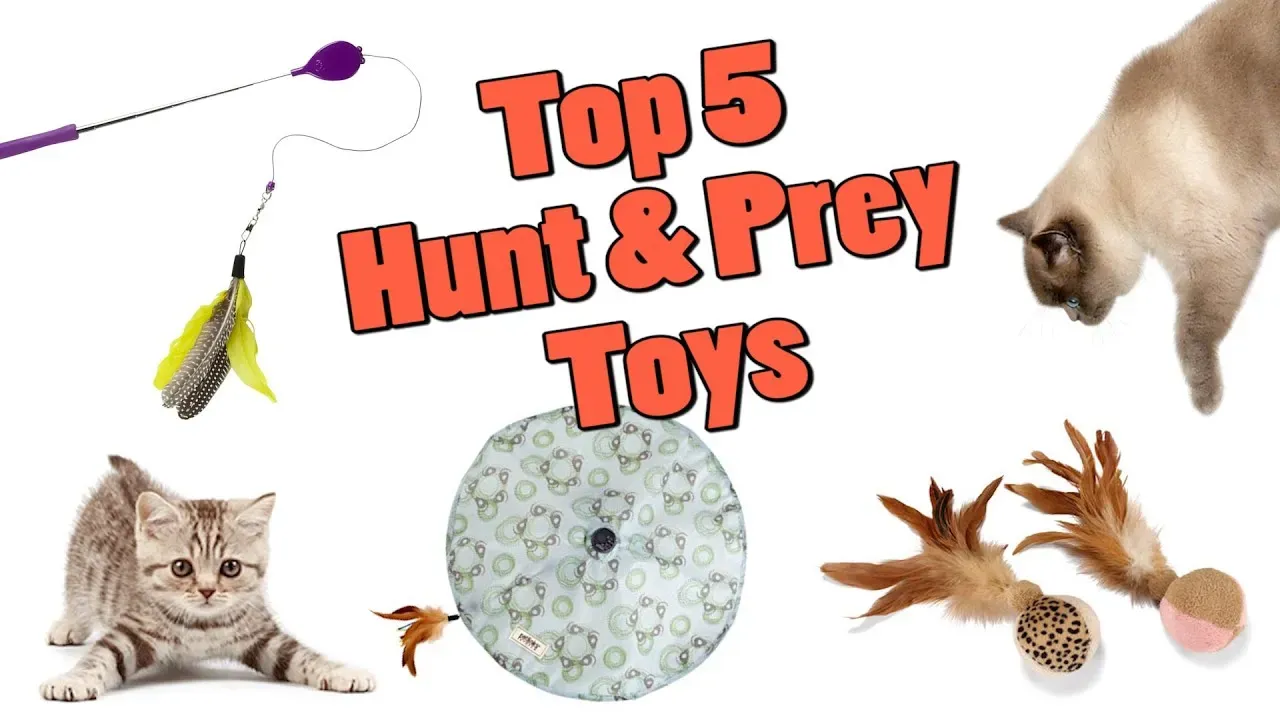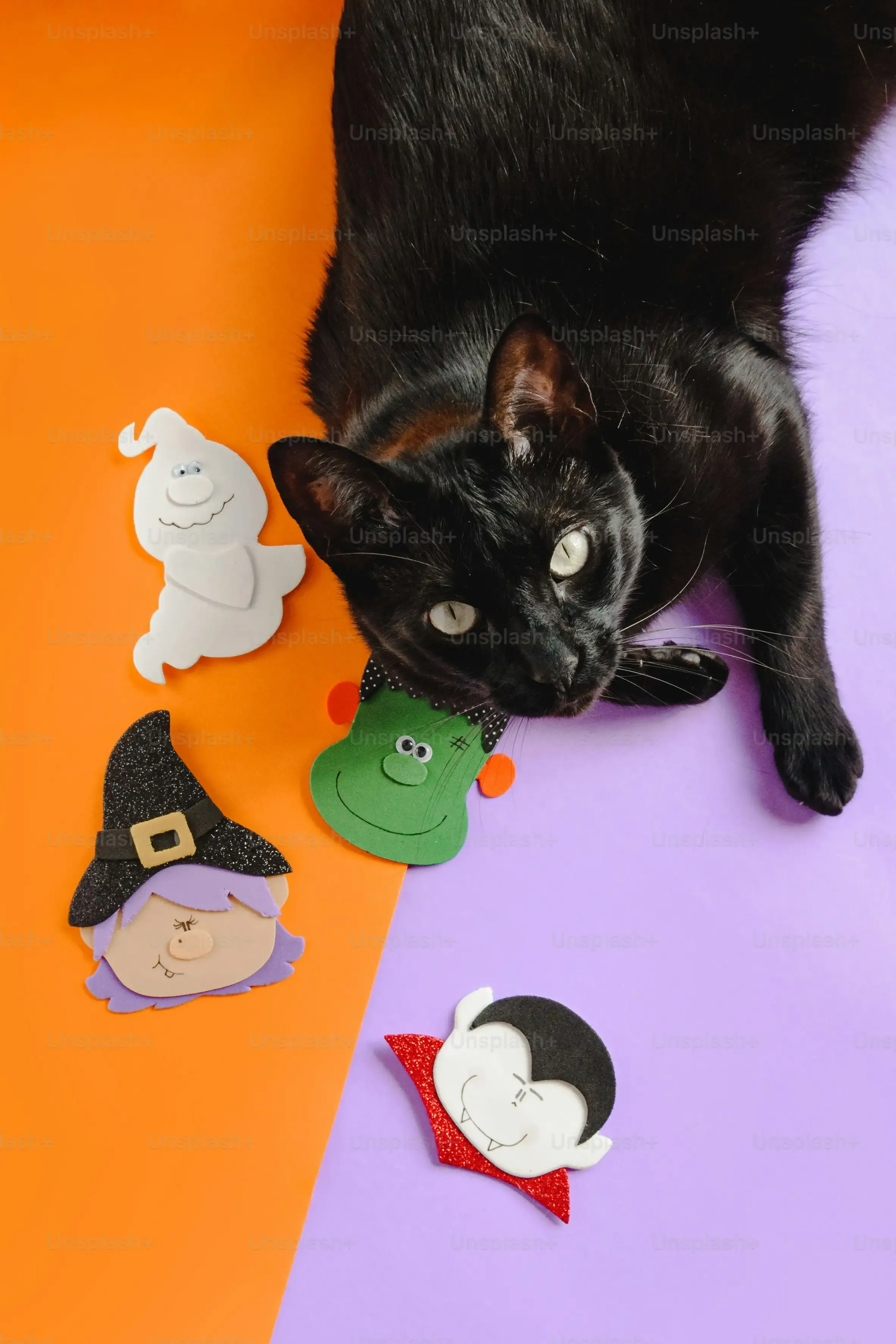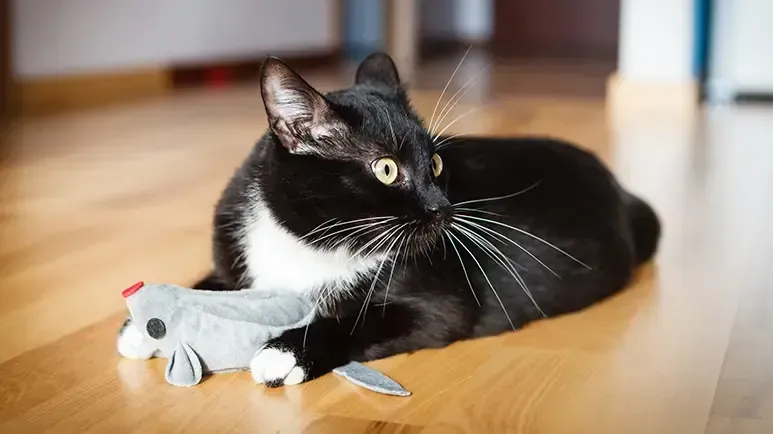Table of Contents
Your adorable, purring house panther might look like a fluffy couch ornament, but don't be fooled. Inside that soft exterior lies a finely tuned hunting machine. For thousands of years, cats earned their keep by stalking, pouncing, and catching prey. Now, living the cushy indoor life, they still have that hardwired drive. Ignoring this instinct is like telling a fish not to swim – it just doesn't work out well for anyone involved. When cats can't express their natural hunting behaviors, things can go sideways. We're talking shredded furniture, surprise ankle attacks, and a generally stressed-out kitty. This is where providing outlets for that prey drive becomes essential, and that's where the right tools come in. Finding the best cat hunting toys isn't just about buying stuff; it's about providing a crucial form of enrichment that keeps your cat mentally stimulated and physically active. We'll dive into the different types of toys that can help you mimic the thrill of the hunt, from simple objects to high-tech gadgets, and show you how to use them effectively to keep your feline friend happy, healthy, and less likely to redecorate your sofa with their claws.
Why Your Cat Needs Hunting Toys (and What Happens If They Don't Get Them)

Why Your Cat Needs Hunting Toys (and What Happens If They Don't Get Them)
The Primal Urge Isn't Just for Show
Look at your cat lounging in a sunbeam. Pretty peaceful, right? Wrong. Underneath that sleepy facade is a creature built for the hunt. Their bodies are designed for quick bursts of speed, their eyes for spotting the slightest movement, their ears for pinpointing tiny sounds. This isn't just historical trivia; it's their biological blueprint. When you bring a cat into your home, you're adopting a tiny predator. Ignoring this fundamental need for stalking, chasing, and "catching" is like buying a sports car and leaving it in the garage forever. It might look nice, but it's not doing what it was made to do. This unmet need doesn't just disappear; it finds other, often less desirable, ways to manifest.
When Instinct Goes Awry: Unhappy Cat, Unhappy Life
So, what happens when that powerful hunting instinct doesn't have a healthy outlet? Think of it as pent-up energy and frustration bubbling over. It can show up as destructive behavior – suddenly, your favorite armchair looks suspiciously like prime scratching territory. You might notice increased aggression, maybe swatting or biting during petting, or even ambushing your ankles as you walk by. Excessive vocalization, pacing, or general restlessness can also be signs that your cat is struggling to cope with their unfulfilled predatory drive. It's not that they're "bad" cats; they're just trying to do cat things in a world that doesn't offer many mice.
Here's a quick look at what happens when the hunt is off the table:
- Increased anxiety and stress
- Destructive scratching and chewing
- Aggression towards people or other pets
- Over-grooming leading to bald spots
- Weight gain and related health issues due to inactivity
- General restlessness and boredom
Simple Prey: Inanimate Toys and the Art of the Ambush

Simple Prey: Inanimate Toys and the Art of the Ambush
Why a Simple Mouse Still Matters
Forget the flashing lights and whirring sounds for a minute. Sometimes, the simplest things are the most effective when it comes to the best cat hunting toys. Think about a real mouse. It's small, it's quiet, and it doesn't exactly announce its arrival with a fanfare. Inanimate toys – the felt mice, the crinkle balls, the little plastic springs – tap directly into the cat's instinct to stalk and pounce on something small and seemingly vulnerable. These aren't toys for a long, drawn-out chase; they are perfect for the ambush predator. Your cat can watch it, creep up on it, hide behind furniture, and then explode into action for that satisfying "kill" bite or bunny kick. They allow the cat to control the "hunt," which is a key part of their natural behavior.
Making the Stillness Exciting
Just tossing a toy mouse on the floor and expecting magic won't cut it forever. Inanimate toys work best when you help set the stage for the hunt. Don't just leave them lying around; hide them. Tuck them under rugs, behind doors, inside empty boxes. This forces your cat to actually search, engaging their nose and problem-solving skills before the pounce. Rotating these toys keeps them novel; a toy that's been out for weeks loses its appeal. Bring out a few different ones each day and put the others away. A little catnip or silvervine rubbed on a toy can also reignite interest in an old favorite, making it smell like fresh "prey." Think of yourself as the set designer for your cat's personal hunting grounds.
How can you make inanimate toys more like actual prey?
- Hide them in different locations daily.
- Stuff them inside puzzle feeders.
- Roll them gently to mimic movement before hiding.
- Rub them with catnip or silvervine sparingly.
- Rotate toys frequently to maintain interest.
The Chase is On: Interactive Toys, Wands, and the Best Cat Hunting Toys

The Chase is On: Interactive Toys, Wands, and the Best Cat Hunting Toys
Why Interactive Play is the Gold Standard
While inanimate toys are great for the ambush, interactive toys are where the real "chase" happens. These are the toys you control, mimicking the erratic, unpredictable movements of live prey. Think wand toys, feather danglers, or even just a piece of string (used carefully, of course). This type of play engages your cat's full predatory sequence: the stalk, the chase, the pounce, and the "kill." It requires your participation, which is key. Your cat isn't just batting at something; they're interacting with *you* in a hunting scenario. This builds your bond and provides intense physical and mental stimulation that a solo toy can't replicate. It's the difference between watching a nature documentary and actually being on the savanna (minus the actual gore, thankfully).
Wand Toys: The MVP of the Hunt
If you're looking for the absolute best cat hunting toys for interactive play, the wand toy is often the reigning champion. It's simple: a stick, a string, and something enticing at the end – feathers, fabric, cork. The magic is in how you use it. You're not just dangling it; you're making it skitter, hide, dart, and pause like a real critter. Drag it along the floor, whip it around corners, let it disappear under a rug. Vary the speed and direction. The key is to make it challenging and unpredictable, just like hunting would be in the wild. Watching your cat's eyes dilate, their body crouch low, and their tail twitch with anticipation? That's pure, unadulterated hunting instinct in action. It's incredibly rewarding to see them fully engaged.
Effective Interactive Toy Tactics:
- Move the toy like prey (erratic, pauses, hiding).
- Let your cat "catch" the toy frequently to complete the hunt cycle.
- End play sessions by letting them "win" and perhaps giving a treat.
- Never use your hands or feet as "toys" during play.
- Put wand toys away when not in use to keep them exciting and safe.
Beyond the Basic Wand: Exploring Interactive Options
While wands are fantastic, the world of interactive toys is vast. There are puzzle feeders that require your cat to work for their food, simulating the effort of a hunt. Laser pointers can be engaging for the chase, but be careful – they never allow the cat to "catch" the prey, which can be frustrating. If you use a laser, always end the session by immediately directing the laser onto a physical toy or treat that your cat *can* capture and "kill." This prevents that frustrating feeling of chasing an uncatchable dot. Other interactive options include toys you throw for them to fetch (some cats actually do this!), or even just a crumpled paper ball you bat around. The goal is shared activity that taps into that deep-seated drive.
Letting Tech Help: Using Electronic Toys for the Hunt

Letting Tech Help: Using Electronic Toys for the Hunt
Automated Action: A Supplement to the Stalk
Look, we can't be home 24/7, constantly dangling a feather wand. Life gets in the way. This is where electronic toys can step in, acting as a digital understudy for the great hunt. These gadgets range from battery-operated mice that zip around randomly to toys with hidden feathers that pop out unexpectedly from various holes. They offer movement and novelty when you're busy or out of the house. Think of the spinning, light-up contraptions or the tracks with balls your cat bats at. They provide a distraction, a moving target that taps into that visual pursuit instinct. They aren't a replacement for interactive play with you, but they can certainly fill in the gaps, keeping a bored cat from deciding your curtains are the next big game.
The Catch (or Lack Thereof) with Gadgets
While electronic toys offer convenience, they come with caveats. The main one? They often lack the crucial "kill" phase. Your cat chases, they bat, but they rarely get that satisfying capture and "bunny kick" that completes the predatory cycle. This can lead to frustration. Also, many electronic toys have predictable patterns, and cats are smart. Once they figure out the sequence, the novelty wears off faster than you can say "Zoomies." Leaving the same electronic toy out all the time is a surefire way to turn it into just another piece of furniture. They work best when rotated frequently and used as part of a larger toy repertoire, complementing the best cat hunting toys that allow for a definitive catch. Don't expect a robot mouse to replace your role as the ultimate prey manipulator.
Tips for incorporating electronic toys:
- Rotate them with other toy types to keep things fresh.
- Use them when you can't actively play interactive games.
- Look for toys with unpredictable movements if possible.
- Consider models that dispense treats when "caught" to mimic a reward.
- Never rely solely on electronic toys for all of your cat's play needs.
Mastering Playtime: Getting the Most Out of Your Best Cat Hunting Toys

Mastering Playtime: Getting the Most Out of Your Best Cat Hunting Toys
so you've got the arsenal of the best cat hunting toys – the fuzzy mice, the killer wands, maybe even a whirring gadget or two. But simply owning them isn't the finish line. Think of yourself as a cat play strategist. It's not just about throwing toys around; it's about setting up scenarios that actually mimic the hunt. This means thinking about timing – cats are crepuscular, meaning they're most active at dawn and dusk, prime hunting hours. Scheduling play sessions around these times can lead to more enthusiastic participation. It also means paying attention to *how* your cat plays. Are they bored with the same old routine? Are they only interested in batting, or do they also need the satisfying "kill" bite? Understanding your cat's individual play style is crucial. Don't just go through the motions; observe, adapt, and make each session feel like a genuine, albeit simulated, victory for your little predator.
Here are some key strategies for maximizing playtime:
- Schedule play sessions during your cat's peak activity times (dawn and dusk).
- Rotate toys frequently to prevent boredom and keep things novel.
- Mimic prey behavior with interactive toys (hide, dart, pause).
- Always allow your cat to "catch" the toy at the end of a session.
- Observe your cat's preferences – do they prefer chasing, pouncing, or batting?
- End play on a positive note, perhaps with a small treat or meal, mimicking eating the "catch."
Making the Hunt Happen for Your Feline
So, there you have it. Your cat isn't plotting world domination; they're just looking for something to chase, pounce on, and maybe pretend to kill. That innate hunting drive isn't going anywhere, and frankly, ignoring it is setting everyone up for a bad time. Giving them the best cat hunting toys isn't just about spoiling them; it's a non-negotiable part of responsible cat ownership. Whether it's a simple felt mouse tossed with conviction, a wand toy danced like a frantic bird, or a gadget that keeps them guessing, providing these outlets channels that primal energy into something constructive. Your furniture will thank you, your ankles will thank you, and your cat will be a far more content housemate. It requires minimal effort on your part for maximum payoff in feline well-being and household peace.